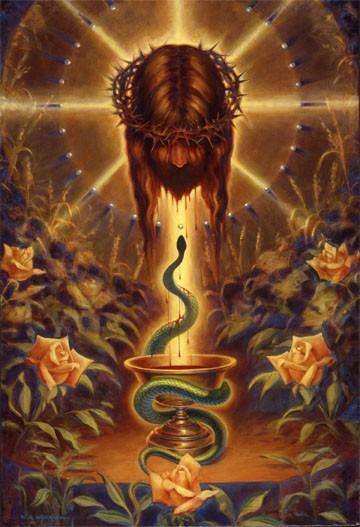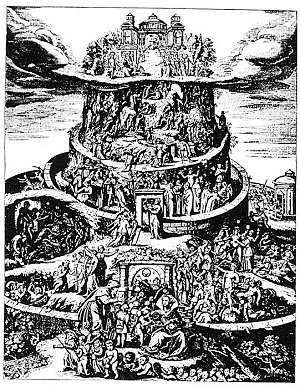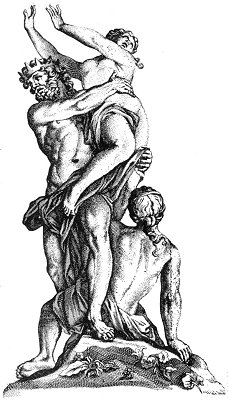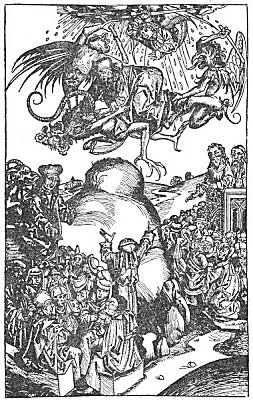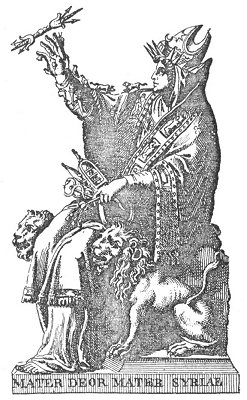Says Hermas: “And, in the middle of the plain, he showed me a great white rock, which had risen out of the plain, and the rock was
Page 245
higher than the mountains, rectangular, so as to be able to hold the whole world; but that rock was old, having a gate hewn out of it, and the hewing out of the gate seemed to me to be recent.” In the Sohar, we find: “To 40,000 superior worlds the white of the skull of His Head (of the most Sacred Ancient in absconditus) is extended. . . . When Seir (the first reflection and image of his Father, the Ancient of the Ancient) will, through the mystery of the seventy names of Metatron, descend into Iezirah (the third world), he will open a new gate. . . . The Spiritus Decisorius will cut and divide the garment (Shekinah) into two parts. . . . At the coming of King Messiah, from the sacred cubical stone of the Temple a white light will be arising during forty days. This will expand, until it encloses the whole world. . . . At that time King Messiah will allow himself to be revealed, and will be seen coming out of the gate of the garden of Odan (Eden). ‘He will be revealed in the land Galil.’ . . . When ‘he has made satisfaction for the sins of Israel, he will lead them on through a new gate to the seat of judgment.’ At the Gate of the House of Life, the throne is prepared for the Lord of Splendor.”
Further on, the commentator introduces the following quotation: “This rock and this gate are the Son of God. ‘How, Lord,’ I said, ‘is the rock old and the gate new?’ ‘Listen,’ He said, ‘and understand, thou ignorant man. The Son of God is older than all of his creation, so that he was a Councillor with the Father in His works of creation; and for this is he old.’ ”
Now, these two assertions are not only purely kabalistic, without even so much as a change of expression, but Brahmanical and Pagan likewise. “Vidi virum excellentem coeli terraeque conditore natu majorem. . . . I have seen the most excellent (superior) MAN, who is older by birth than the maker of heaven and earth,” says the kabalistic Codex. The Eleusinian Dionysus, whose particular name was Iacchos (Iaccho, Iahoh) — the God from whom the liberation of souls was expected — was considered older than the Demiurge. At the mysteries of the Anthesteria at the lakes (the Limnae), after the usual baptism by purification of water, the Mystae were made to pass through to another door (gate), and one
Page 246
particularly for that purpose, which was called “the gate of Dionysus,” and that of “the purified.”
In the Sohar, the kabalists are told that the work-master, the Demiurge, said to the Lord: “Let us make man after our image.” In the original texts of the first chapter of Genesis, it stands: “And the Elohim (translated as the Supreme God), who are the highest gods or powers, said: Let us make man in our (?) image, after our likeness.” In the Vedas, Brahma holds counsel with Parabrahma, as to the best mode to proceed to create the world.
Canon Westcott, quoting Hermas, shows him asking: “And why is the gate new, Lord? I said. ‘Because,’ he replied, ‘he was manifested at the last of the days of the dispensation; for this cause the gate was made new, in order that they who shall be saved might enter by it into the Kingdom of God.’ ” There are two peculiarities worthy of note in this passage. To begin with, it attributes to “the Lord” a false statement of the same character as that so emphasized by the Apostle John, and which brought, at a later period, the whole of the orthodox Christians, who accepted the apostolic allegories as literal, to such inconvenient straits. Jesus, as Messiah, was not manifested at the last of the days; for the latter are yet to come, notwithstanding a number of divinely-inspired prophecies, followed by disappointed hopes, as a result, to testify to his immediate coming. The belief that the “last times” had come, was natural, when once the coming of King Messiah had been acknowledged. The second peculiarity is found in the fact that the prophecy could have been accepted at all, when even its approximate determination is a direct contradiction of Mark, who makes Jesus distinctly state that neither the angels, nor the Son himself, know of that day or that hour. We might add that, as the belief undeniably originated with the Apocalypse, it ought to be a self-evident proof that it belonged to the calculations peculiar to the kabalists and the Pagan sanctuaries. It was the secret computation of a cycle, which, according to their reckoning, was ending toward the latter part of the first century. It may also be held as a corroborative proof, that the Gospel according to Mark, as well as that ascribed to John, and the Apocalypse, were written by men, of whom neither was sufficiently acquainted with the other. The Logos was first definitely called petra (rock) by Philo; the word, moreover, as we have shown elsewhere, means, in Chaldaic and Phoenician, “interpreter.” Justin Martyr calls him, throughout his works, “angel,” and makes a clear distinction between the Logos and God the Creator.

Moe is the founder of GnosticWarrior.com. He is a father, husband, author, martial arts black belt, and an expert in Gnosticism, the occult, and esotericism.

